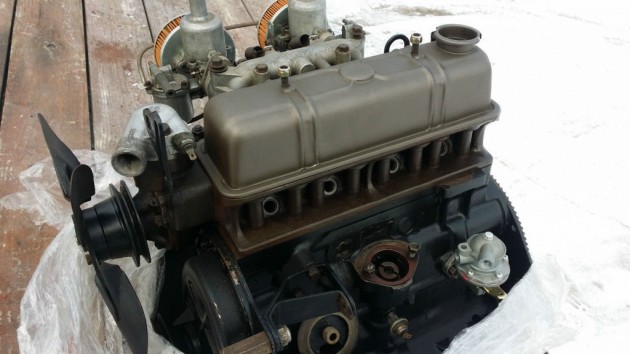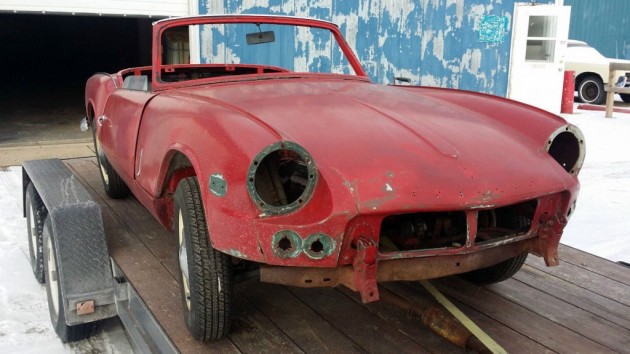
Austin-Healey may have reintroduced the world to the affordable sports car, but it didn’t take long for Triumph to come out with their own little roadster. The Spitfire was a good car for the price, but the early ones were known for their squirrelly handling characteristics. Triumph was able to correct the problem in later cars, but people still prefer these earlier examples. Sure, they didn’t handle as well and they didn’t have much power, but boy, did they look pretty! This particular car was taken apart by a previous owner who started the restoration and never finished. The engine’s been rebuilt and a few things have been replaced. There’s still a lot of work left to do, but it is listed here on eBay without a reserve.

This is what you don’t want to have happen in a corner! The rear wheels would tuck under during hard cornering and that’s not a good thing to have happen when you’re going fast. I bet things got real exciting real quick when that happened. That may have scared consumers away back then, but it doesn’t seem to deter people from buying these cars today. Personally, I like to drive my classics so if this were mine, I’d want to find a fix for that before doing any canyon carving.

Not that this car is going to be tearing up any curves anytime soon. The engine is claimed to rebuilt, but you will still need to reinstall it along with everything else. Not before replacing the floors and repainting the whole thing though. A bunch of new parts are included to make the job a little easier though.

Hopefully, this little guy goes to someone with the know-how and resources to the do the job right so that it doesn’t just get sold onto the next optimistic collector or dealer. Projects like this somehow lose a few parts with each new owner and that just going to make the job trickier for the guy who eventually attempts the task. Here’s hoping this Spit sees the road again soon!


This seems to be the season for round-tail Spitfires!
The “at the limit” handling of the pre-1971 suspension can be fixed by either the addition of an aftermarket camber compensator or conversion to the later swing-spring design.
Here’s another one on eBay at no reserve that looks pretty nice! http://www.ebay.com/itm/Triumph-Spitfire-/161958895076
the blue one you found on ebay looks like a nice project if the bidding stays low. the photo of the underdash wiring is interesting. ” back in the day” i was autocrossing midgets/sprites in the same stock class as early spitfires. we, the midget/sprite racers, would always check the spitfires to make sure they did not has a camber compensator and they, the spitfire racers, would check to make sure we were run the correct size motor. great fun.
they also made/make camber compensators for beetles and other VW’s which were not to be used in the stocks classes either.
I have driven a 1962 Herald and a 1963 Spitfire for more than 30 years, and have never had a problem with rearend tuck. Must say the more negative camber, the better they handle…..or maybe some drivers are simply better than others!?!?!
on the red one in this posting i see more then the current bid in parts. buy both the red and blue one and build one nice car plus have a lot of spare parts. nice finds
I always see a red flag when the serial number plates are not attached to the car. I would like to know the reason why.
I had a 67 Spitfire Mk11 back when they could be had for a couple of hundred. It was BRG, not rusty, and a s#*tload of fun! My first experience with positive earth and the “Prince”. That handling issue was only a problem if you really pressed it in a turn and/or had crap tires. When it folded under you were spinning around and hoping for the best. I swear I’ll get one again, and like seeing them come up here. Won’t take up much shop space, easy to work on, and will certainly bring back memories.
I had a 1964 Spitfire. Commuted from Ridgefield, CT to train station. Very curvy roads and no traffic. Never had a problem with rear tuck. Also owned ’60 Corvair and ’64 Turbo Corvair, which were supposedly prone to tuck, according to Ralph Nader.